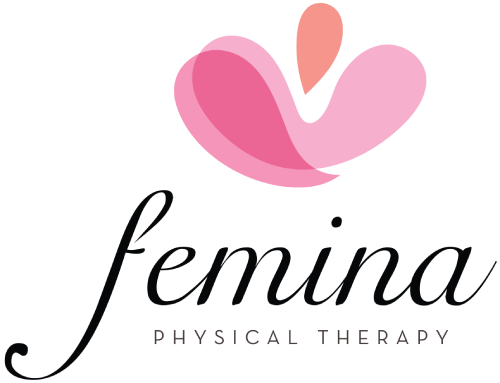
A healthy lifestyle includes getting back to exercise postpartum
Exercise has shown to be beneficial in all stages of life, and the postpartum period is no exception.
Some of the benefits of postpartum exercise are:
- Strengthen and tone abdominal muscles
- Boosts energy
- May help prevent postpartum depression
- Promotes better sleep
- Relieves stress
- Can help you lose the extra weight that you may have gained during pregnancy
(ACOG, July 2019).
Even with all these benefits, research shows that most mothers stop participating in exercise programs which leads to increased weight gain and obesity (Minig et al., and O’Toole et al., 2003). There are many adjustments that have to be made when becoming a new mother and the information on the internet regarding postpartum exercise can be misguided and overwhelming. Let’s break down what the literature says about guidelines for returning to exercise postpartum.
The American College of Obstetricians and Gynecologists (ACOG) guidelines for returning to exercise are to resume exercise slowly based on the woman’s physical capabilities. ACOG recommends returning to pre pregnancy exercises at six weeks postpartum. This timeline is based on persisting physiological and morphological changes of pregnancy.
After a cesarean, most practitioners clear their patients to return to pre pregnancy exercise at eight weeks postpartum. The main concern in this time period is allowing the abdominal incision to heal. Dr. James Clapp, an exercise physiologist has conducted several studies on the effects of exercise on pregnancy and postpartum. In his last book co-authored by Catherine Cram, they laid out more specific guidelines on returning to exercise in the postpartum period.
They suggest that the main goal of exercise in the initial six weeks is to obtain personal time and redevelop a sense of control. The following are recommended:
(1) beginning slowly and increasing gradually;
(2) avoiding excessive fatigue and dehydration;
(3) supporting and compressing the abdomen and breasts;
(4) stopping to evaluate if it hurts; and
(5) stopping exercise and seeking medical evaluation if experiencing bright red vaginal bleeding heavier than a menstrual period.
They add that if it feels good, it probably is; highlighting the importance of listening to your body. If you feel pain, try to modify the exercise or seek out a professional to help guide you through this phase. If you feel soreness in the right muscles, great, you are on the right path!
Based on Clapp and Cram’s research, the goal during the remainder of the postpartum year is to improve physical fitness and status. Another group of researchers, Dewey and McCrory recommend that women beginning a postpartum exercise program should obtain medical clearance, begin slowly, progress gradually, and maintain adequate fluid intake. McCrory also recommends that women exercise aerobically 3-6 days a week for 25 to 60 minutes, supplement with muscle toning exercises, and being creative as it may be necessary to exercise with children. It is recommended to discuss these guidelines at your postpartum visits and create an individualized plan with your healthcare provider.
Below these guidelines are broken down into two separate categories, the first 24 hours postpartum to 6 weeks and on.
First six weeks postpartum:
The first few exercises can begin 24 hours after childbirth. Reestablish a connection to your breath and core with diaphragmatic breathing and kegels. Begin gently and progress as your connection to your core returns. Walking is also a great way to return to exercise in the early postpartum stages.
In the first six weeks of postpartum the goal of exercise is to promote relaxation and enhance wellbeing. Self monitoring is a great tool to make sure your exercise program is serving you. Based on Clapp and Cram’s research some of the things you should monitor during the first six weeks of exercise are:
- How the exercise makes you feel- It should feel good and enhance feelings of well-being
- Pain or heavy bleeding- there should not be any associated to exercise
- Fluid intake- need an adequate amount
- Rest- important to get plenty
- Normal Infant weight gain
So what are adequate quantities of fluid and how do you know if infant weight gain is normal?
Urine color can be a good tool to assess hydration. Clear to pale yellow is the goal. Also, a good rule of thumb is you should feel like you need to urinate around the same time you feed the baby (approx every 2-3 hours).
Making sure your infant is gaining weight appropriately can be assessed at each well baby visit. Also by daily monitoring of soft stool and the number of soiled diapers in a 24 hour period (5-6). This is the time to adjust to all the new changes in your personal life and body. Take it slow and listen to your body.
You should also continue to self monitor during and after your workout session. Some questions to ask yourself are: Do you feel tired after your exercise routine? Pain? More stiff? If the answer is yes to any of these then you may need to revise your exercise program or seek out a qualified professional for guidance.
6 Weeks on:
Based on Clapp and Cram’s book, the main concerns during this time are monitoring performance, well-being and growth, and development of the baby. They recommend weekly self monitoring to assess for over and under training. Some of the key assessments are discomfort, pain, performance, motivation and fatigue.
It is important for the new mother to identify what her goals are and develop a program around her new lifestyle of also being a Mom. This may mean making realistic goals and creating exercise programs that address all domains of physical activity (cardiovascular, strengthening, stretching and well-being). It is important to have a well balanced exercise program to avoid burn-out and injury. It may be helpful to find activities that combine two or more of these components while promoting emotional wellbeing.
This is an individual process to find what exercises or sports are your “play”. The goal is to find an activity you enjoy that you would want to return to. Tracking performance can help with determining appropriate intensity of exercise and motivation. Cram and Clapp suggest monitoring pulse rate, rating of perceived exertion, speed, milage, strength or sport specific skills. These should all improve gradually over time.
It can be helpful to seek out a qualified physical or pelvic therapist postpartum to reestablish a connection to your core. Additionally, if you are experiencing any pain, weakness, urinary incontinence or pressure this should be evaluated further. Contact us here for an in-office or telehealth session in California (and virtual consultations worldwide) so we can help you reach your postpartum exercise goals.
References:
Clapp, J. F., & Cram, C. (2012). Exercising through your pregnancy. Omaha, Nebraska: Addicus Books.
Exercise After Pregnancy. (n.d.). Retrieved December 15, 2020, from https://www.acog.org/womens-health/faqs/exercise-after-pregnancy
Larson‐Meyer, D. (2012, September 06). Effect of Postpartum Exercise on Mothers and their Offspring: A Review of the Literature. Retrieved December 15, 2020
Minig, L., Trimble, E. L., Sarsotti, C., Sebastiani, M. M., & Spong, C. Y. (2009). Building the Evidence Base for Postoperative and Postpartum Advice. Obstetrics & Gynecology, 114(4), 892–900. doi:10.1097/aog.0b013e3181b6f50d
O’Toole ML, Sawicki MA, Artal R. Structured diet and physical activity prevent postpartum weight retention. J Womens Health (Larchmt) 2003;12:991–8.
